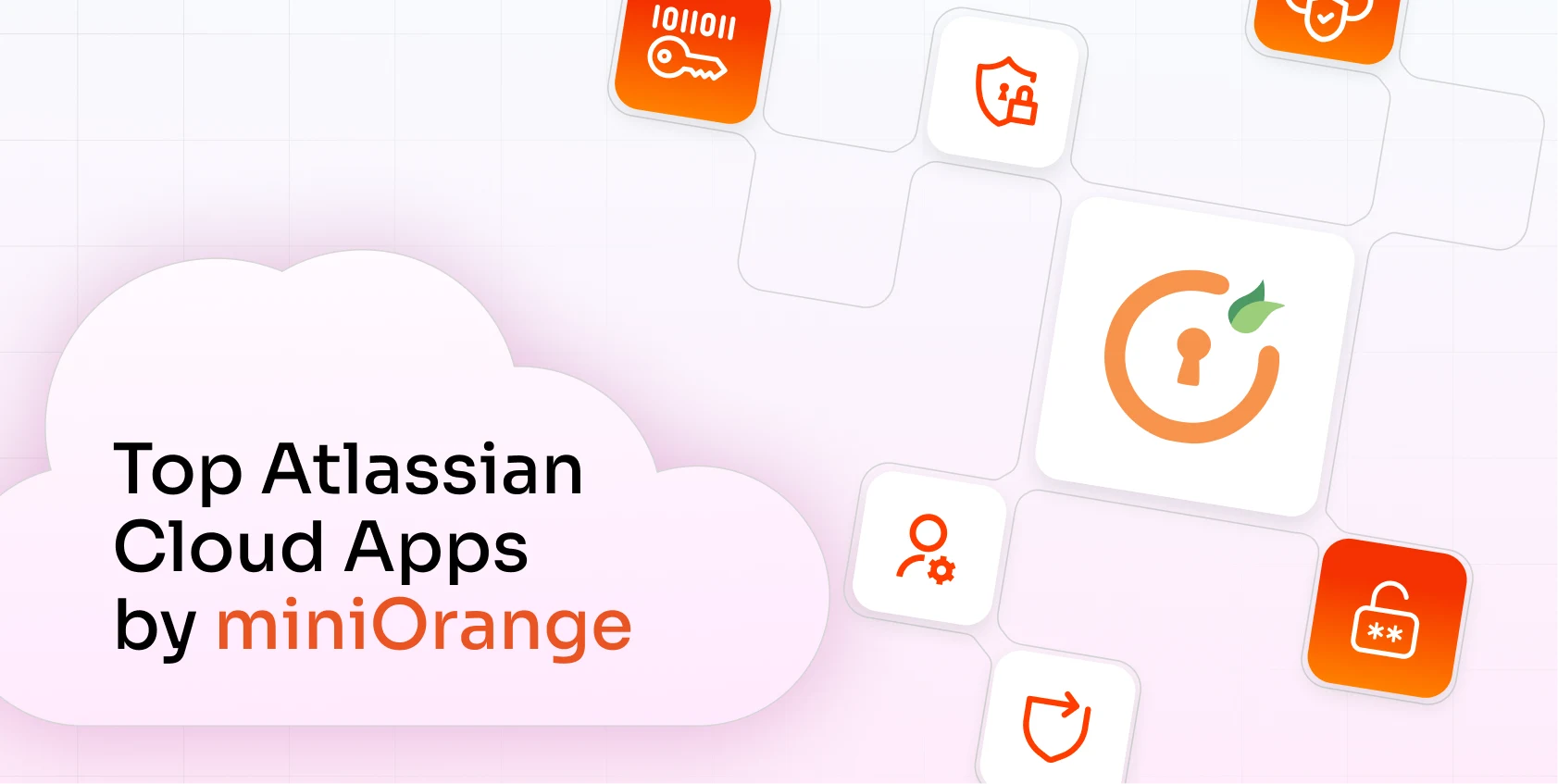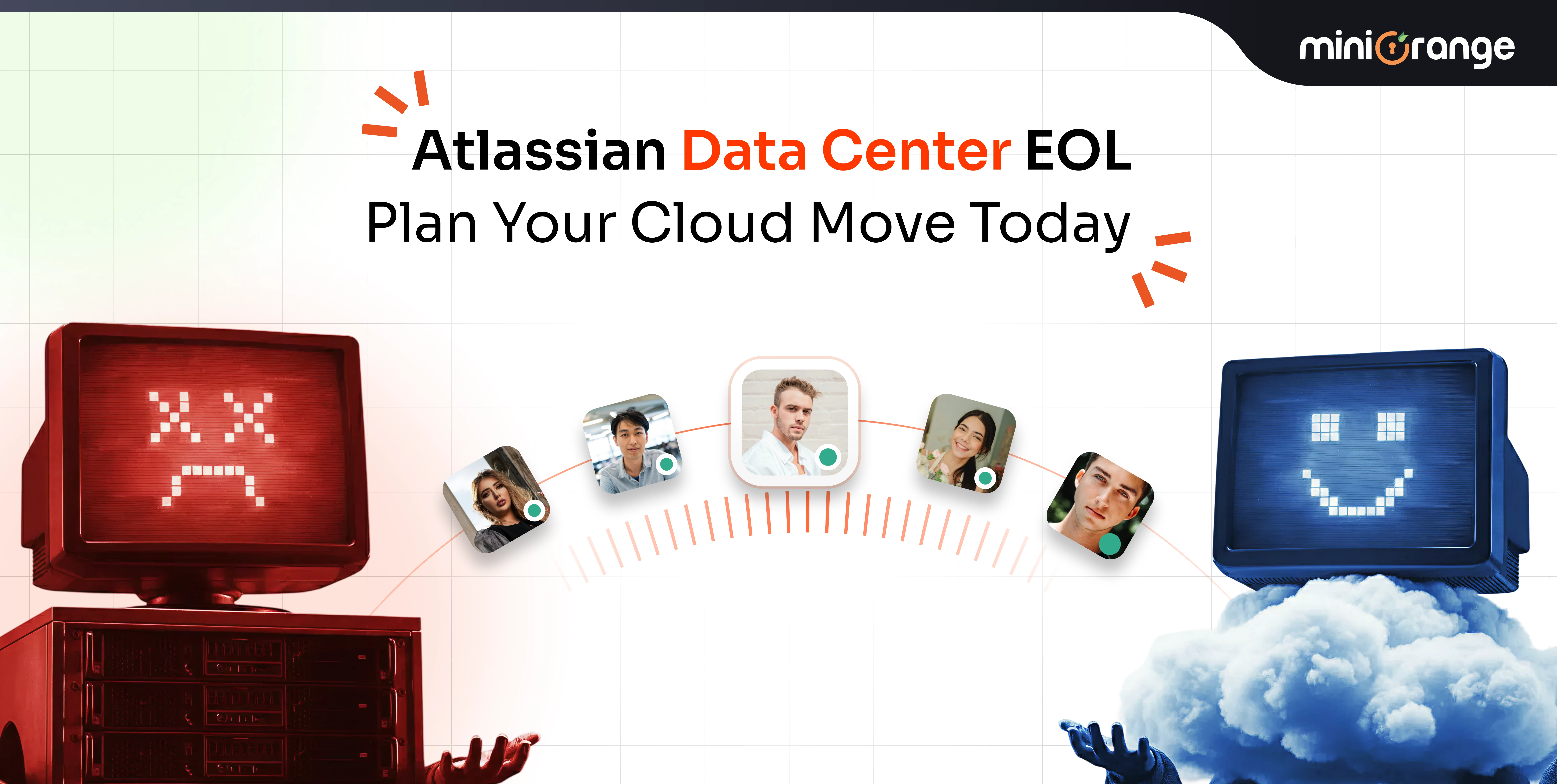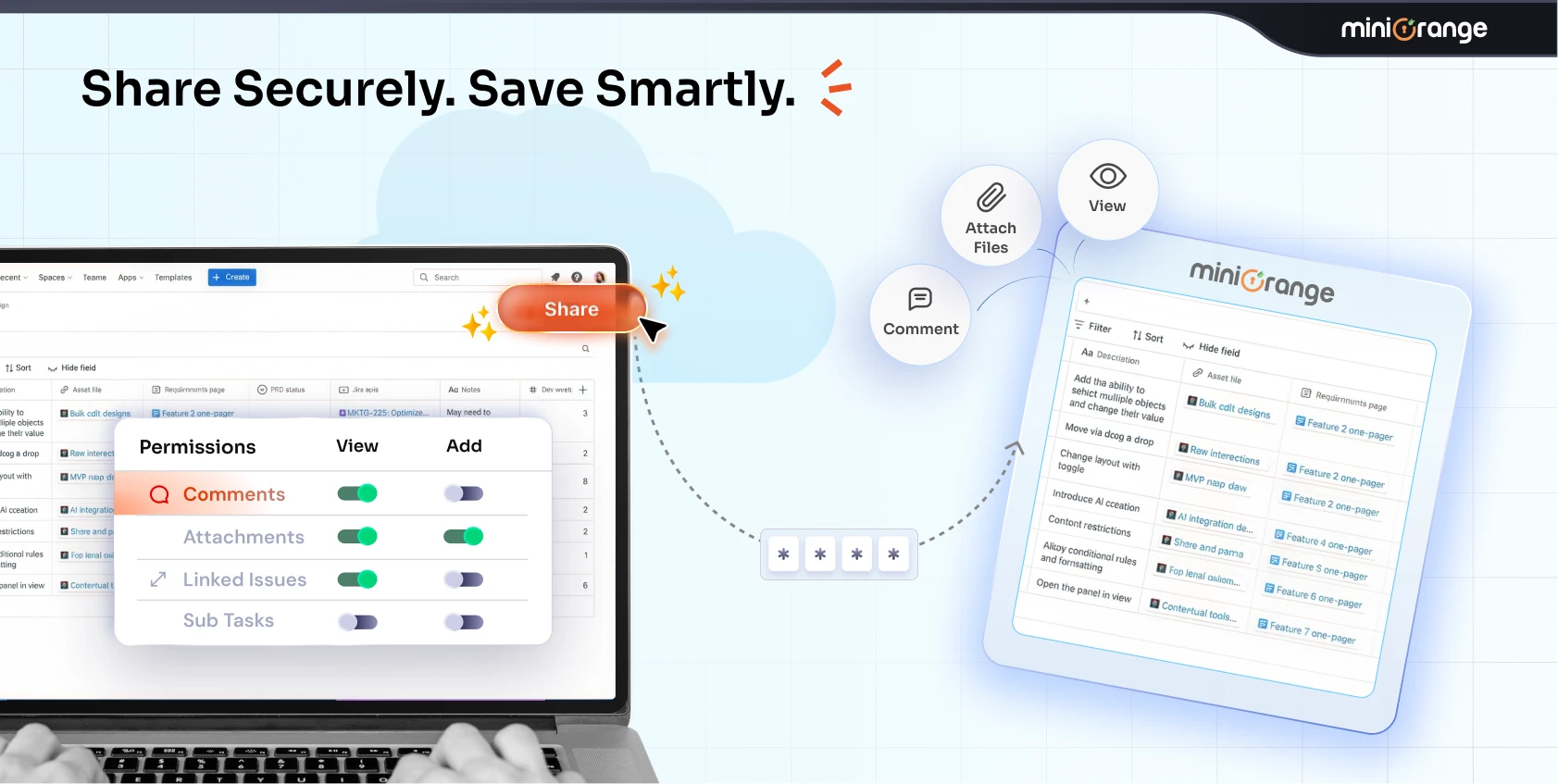SAML (Security Assertion Markup Language) has been the standard protocol for Single Sign-On (SSO). It provides reliable authentication for browser-based logins and supports identity federation across trusted domains.
However, SAML was primarily designed to handle authentication in web browser sessions and does not natively support secure API access or delegated authorization models required by modern applications.
OAuth 2.0 was developed to address these gaps. It offers a token-based authentication framework with fine-grained, scoped access controls that are essential for secure API interactions, automation processes, and complex identity workflows involving multiple services.
OAuth enables applications to request access on behalf of users without exposing their credentials, supporting seamless integration with third-party tools and services.
Knowing when to choose OAuth over SAML in Atlassian environments empowers your team to:
- Secure API-driven workflows by granting limited and revocable access tokens
- Enable real-time access control through dynamic permission updates
- Improve compatibility with a broad range of third-party integrations
- Reduce administrative overhead in large-scale deployments by automating user provisioning and access management
Making an informed decision ensures that your Atlassian tools remain both secure and efficient as your organization grows and your identity management needs evolve.
When to Choose OAuth Over SAML in Atlassian
Choosing the right authentication protocol depends on your team’s specific needs and environment. Below are key scenarios where OAuth offers distinct advantages over SAML, helping you decide when making the switch makes the most sense.
1. API-Driven Environments
(Primary: OAuth for Atlassian, Atlassian API authentication)
Modern Atlassian deployments increasingly rely on automated workflows, such as CI/CD pipelines, infrastructure-as-code, reporting dashboards, and custom integrations. OAuth 2.0 excels in these API-driven contexts because it uses token-based authentication specifically designed for secure, delegated access without exposing user credentials.
Unlike SAML’s XML-based browser SSO, OAuth issues access tokens scoped to specific permissions, which client applications can use for granular API calls. This means automation tools like Jenkins, Bamboo, or custom apps can authenticate independently of user sessions. For example, a DevOps team integrating Jenkins with Jira Service Management can configure OAuth scopes so that build servers access only the relevant Jira APIs. Tokens can be revoked centrally if the user leaves or changes roles.
This model supports fine-grained authorization, token expiration, and refresh, all critical for secure automation. By decoupling API access from interactive logins, OAuth reduces risks such as leaked credentials and session hijacking that can compromise CI/CD pipelines.
Why it matters:
OAuth ensures that API interactions within Atlassian are secure, auditable, and maintain least-privilege access, which is foundational for maintaining trust in automated enterprise workflows.
2. Dynamic User Access Needs
(Secondary: OAuth vs SAML security, Atlassian user access control)
Atlassian environments are rarely static. Team compositions evolve, contractors come and go, and project roles shift rapidly. OAuth, especially when paired with SCIM provisioning, supports dynamic, real-time user and group management by syncing permissions directly from Identity Providers (IdPs) such as Azure AD, Okta, or Google Workspace.
This real-time synchronization enables role-based access control (RBAC) that adjusts immediately as users are added or removed from groups, without requiring users to log out and back in. OAuth tokens reflect current permissions through scopes and claims, ensuring that API calls and app sessions are always authorized according to the latest organizational policies.
In contrast, SAML relies on assertions generated during the login event and is session-bound, meaning any role or group changes during an active session will not take effect until the next authentication. This can potentially leave security gaps if permissions are not updated promptly.
Why it matters:
OAuth’s dynamic provisioning and real-time sync reduce administrative overhead, improve compliance posture, and minimize risks associated with stale permissions and over-privileged users.
3. Third-Party Integrations
(Primary: OAuth vs SAML Atlassian integrations)
The Atlassian suite rarely exists in isolation. Modern enterprises connect Jira, Confluence, and Bitbucket with myriad third-party platforms such as Slack for notifications, GitHub for code repositories, AWS for cloud services, and Google Workspace for collaboration.
OAuth’s delegated authorization model enables these integrations to request limited, revocable access tokens scoped to specific actions or resources. This delegation aligns with the OAuth principle of least privilege and enables users to control what external applications can access on their behalf, without exposing passwords or full account access.
SAML, on the other hand, is primarily an authentication protocol designed for identity federation between two parties and does not natively support delegated resource access or token refresh. Integrations using SAML often rely on workarounds or additional protocols, increasing complexity and security risks.
Why it matters:
OAuth’s native support for delegated access simplifies cross-platform integrations, enhances security by minimizing credential exposure, and facilitates modern, API-first workflows critical for agile teams.
4. Scalability Requirements
(Secondary: OAuth vs SAML performance, scalable authentication Atlassian)
Large-scale Atlassian deployments, especially those spanning multiple geographic regions or supporting tens of thousands of users, demand authentication protocols that scale efficiently and reliably.
SAML’s authentication exchanges rely on verbose XML-based assertions and synchronous browser redirects, which introduce higher latency and complexity. Additionally, managing SAML configurations for multiple IdPs or handling bulk user attribute mappings often requires significant manual effort and custom tooling.
OAuth addresses these challenges with lightweight JSON Web Tokens (JWTs) that are faster to generate, parse, and validate. Its stateless token model supports high concurrency and distributed authentication across multiple Atlassian instances or data centers. Features like token expiration and refresh workflows further optimize resource use and improve session resilience.
For example, enterprises with large Jira user bases find OAuth enables faster authentication responses and easier support for multiple login flows without sacrificing security or control.
Why it matters:
OAuth reduces authentication overhead, improves user experience through faster logins, and simplifies administration, all of which are key factors for scaling Atlassian in enterprise environments.
5. Modern Security & Compliance
(Primary: OAuth vs SAML security Atlassian)
Security in 2025 is no longer just about verifying identity. It demands continuous assurance, adaptive policies, and detailed auditability. OAuth 2.0 and its extension OpenID Connect are designed with these modern requirements in mind:
- Multi-Factor Authentication (MFA): OAuth tokens can require MFA enforcement for both interactive and API access, integrating with identity provider policies seamlessly.
- Conditional Access: OAuth supports policies based on user device health, location, network context, and risk signals, enabling Zero Trust architectures.
- Identity Verification: OpenID Connect adds an ID token that authenticates user identity alongside OAuth’s authorization capabilities.
- Comprehensive Auditing: OAuth workflows can be logged in detail, capturing token issuance, usage, and revocation events, which are critical for compliance regimes such as GDPR, HIPAA, and SOC 2.
While SAML can be extended to support some of these capabilities, it often requires additional middleware or complex customizations, increasing cost and operational risk.
Why it matters:
OAuth’s modern security architecture helps organizations maintain compliance, reduce attack surfaces, and enforce strict access controls aligned with evolving enterprise security policies.
Why miniOrange Is Your Go-To for OAuth SSO in Atlassian
miniOrange offers a comprehensive OAuth/OIDC SSO solution for Atlassian Data Center and Cloud that goes beyond native options to meet enterprise requirements:
- Broad Identity Provider Support: Seamlessly integrates with over 20 IdPs including Okta, Azure AD, Google Workspace, and Ping Identity, providing flexibility to fit your existing infrastructure.
- Advanced User & Group Management: Supports Just-in-Time provisioning and SCIM for automated user lifecycle management, along with customizable attribute synchronization and regex-based username generation for tailored login experiences.
- Robust Session & Security Controls: Enables Single Logout (SLO) across Jira and the Identity Provider, and enhances session security with OAuth’s OIDC logout endpoints, adaptive authentication, and support for MFA and WebAuthn.
- Flexible Configuration & Scalability: Provides export/import of configurations to streamline deployment and maintenance, and leverages lightweight JSON tokens for fast, scalable authentication even in large organizations.
- Future-Ready Features: Includes support for risk-based access policies, audit logging, and secure API gateways, ensuring compliance with evolving security standards while maintaining user productivity.
miniOrange empowers Atlassian admins to harness OAuth’s full potential with user-friendly configuration, expert support, and enterprise-grade security—making OAuth adoption straightforward and effective.
Bonus: You can run OAuth alongside SAML for hybrid environments, ideal during phased migrations.
Conclusion
SAML has served Atlassian teams well for over a decade, delivering reliable browser-based SSO and meeting the needs of traditional identity federation. But the way teams work in 2025 looks very different.
Workflows now span APIs, multiple identity providers, external collaborators, and a growing web of third-party integrations. Security standards have shifted from “log in once” to continuous, context-aware authentication.
That’s where OAuth shines.
It’s purpose-built for API access, flexible enough for dynamic roles, lightweight for global scale, and future-ready for modern compliance frameworks. By adopting OAuth for Atlassian, whether for Jira, Confluence, or Bitbucket—you’re not just replacing a login protocol. You’re enabling:
- Faster, more secure integrations
- Real-time access alignment across tools
- Compatibility with today’s and tomorrow’s security policies
- Reduced admin effort in managing access at scale
If your environment still relies solely on SAML, the decision to move toward OAuth isn’t about abandoning a proven standard, it’s about evolving to meet the needs of a connected, API-driven enterprise. In many cases, the smartest path is a hybrid approach—running OAuth where agility, integrations, and APIs matter most, and keeping SAML where it still makes sense for stable, browser-only access.
FAQs
Q1: Which identity providers support OAuth for Atlassian?
Okta, Azure AD, Google Workspace, Auth0, Ping Identity, and most modern IdPs support OAuth 2.0 for Atlassian.
Q2: When should I choose OAuth over SAML?
If you rely heavily on APIs, have dynamic access needs, or require seamless third-party integrations, OAuth is the better fit.
Q3: Can OAuth replace SAML for all Atlassian authentication?
Yes, in most Cloud and Data Center setups. For purely browser-based SSO without API requirements, SAML remains viable.





Leave a Comment